Nominated innovations
1000 innovative clean energy solutions and > 150 framework enablers with the potential to deliver more than twelve gigatonnes of avoided emissions by 2030
These assessments are based on a basic avoided emission assessment. The overall concept of avoided emissions is that a solution (product or service) enables the same function to be performed with significantly less GHG emissions. The method of measuring avoided emissions, is to compare a baseline scenario without the enabling solution, with a scenario using the enabling solution; whereby the baseline represents the ‘business as usual’ (BAU) scenario.
These assessments are based on the framework document: The Avoided Emissions Framework (AEF) from September 2020
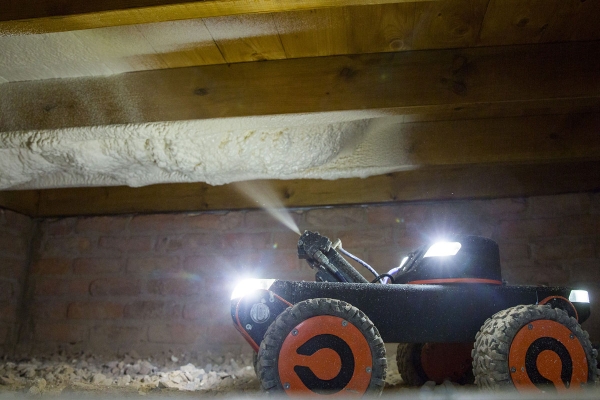
Robotic vehicle to insulate suspended timber floors
Q-Bot have developed what they claim is the first affordable and fully accredited solution for the retrofit of insulation to suspended floors. The solution works by using a robotic vehicle to insulate the underside of suspended timber floors in-situ. The robot is inserted under the floor through an access hatch or air vent and surveys the void and condition of the floor. If suitable, the robot sprays an expanding insulation foam and finally records the insulation to verify the area and depth of insulation applied.
United Kingdom
≈10

Q-bot
Robotic vehicle to insulate suspended timber floors
Q-Bot have developed what they claim is the first affordable and fully accredited solution for the retrofit of insulation to suspended floors. The solution works by using a robotic vehicle to insulate the underside of suspended timber floors in-situ. The robot is inserted under the floor through an access hatch or air vent and surveys the void and condition of the floor. If suitable, the robot sprays an expanding insulation foam and finally records the insulation to verify the area and depth of insulation applied.
≈10Mt CO2e/year

HIKARI positive energy building
Toshiba and Bouygues have together developed a solution for positive energy buildings they called “HIKARI”, which generates more energy than it consumes. A first-of-a-kind positive energy building, located in Lyon, France, HIKARI is designed to be an exceptional example of a smart building that leads to rethinking the design of more traditional buildings, to ensure a smart, sustainable city. Created through a partnership with the Japanese government agency New Energy and Industrial Technology Development Organization (NEDO) and Grand Lyon, HIKARI is a part of Metropolitan Lyon’s mid-term objective to design new uses for housing and shared areas to encourage a "zero carbon" territory.
Japan
≈10

Toshiba and Bouygues
HIKARI positive energy building
Toshiba and Bouygues have together developed a solution for positive energy buildings they called “HIKARI”, which generates more energy than it consumes. A first-of-a-kind positive energy building, located in Lyon, France, HIKARI is designed to be an exceptional example of a smart building that leads to rethinking the design of more traditional buildings, to ensure a smart, sustainable city. Created through a partnership with the Japanese government agency New Energy and Industrial Technology Development Organization (NEDO) and Grand Lyon, HIKARI is a part of Metropolitan Lyon’s mid-term objective to design new uses for housing and shared areas to encourage a "zero carbon" territory.
≈10Mt CO2e/year
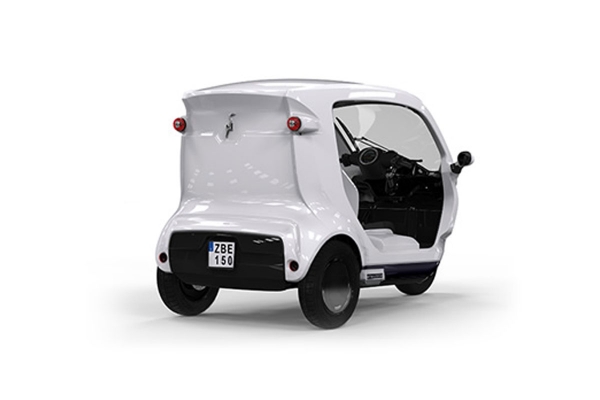
Small three-wheeler EVs for transportation
Clean Motion has developed a small, efficient vehicle. The ultra-light Zbee is three-wheeled, electric vehicle aiming to achieve high efficiency and driving economy. Clean Motion claims its front-end crash structure and three-point safety belts give it improved safety features over competing lightweight vehicles. Zbee replaces conventional cars for short distance transportation of up to three people or light cargo. The company claims that Zbee uses 7% of the energy of the average fossil-fueled city car, with speeds of up to 45 km/h. Its lean form factor and lightweight fiber reinforced plastic body allow it to be parked easily.
Sweden
≈10

Clean Motion AB
Small three-wheeler EVs for transportation
Clean Motion has developed a small, efficient vehicle. The ultra-light Zbee is three-wheeled, electric vehicle aiming to achieve high efficiency and driving economy. Clean Motion claims its front-end crash structure and three-point safety belts give it improved safety features over competing lightweight vehicles. Zbee replaces conventional cars for short distance transportation of up to three people or light cargo. The company claims that Zbee uses 7% of the energy of the average fossil-fueled city car, with speeds of up to 45 km/h. Its lean form factor and lightweight fiber reinforced plastic body allow it to be parked easily.
≈10Mt CO2e/year

Guidance for apartment seekers to minimize travel
HomeWay provides software that helps people that are looking for a new home to move closer to public transport stations and to reduce their commuting time. The innovation matches several parameters of users such as budget, daily activities and other specific requirements that can be customized to generate an optimized housing location. By using HomeWay, a home with shorter commuting distances or reduced need of a privately-owned car can easily be chosen. This would reduce emissions from urban transports and simplify urban planning and expansion of urban areas which could further reduce emissions created by mobility demands.
Austria
≈10

Climathon Project HomeWay
Guidance for apartment seekers to minimize travel
HomeWay provides software that helps people that are looking for a new home to move closer to public transport stations and to reduce their commuting time. The innovation matches several parameters of users such as budget, daily activities and other specific requirements that can be customized to generate an optimized housing location. By using HomeWay, a home with shorter commuting distances or reduced need of a privately-owned car can easily be chosen. This would reduce emissions from urban transports and simplify urban planning and expansion of urban areas which could further reduce emissions created by mobility demands.
≈10Mt CO2e/year

Recovery of waste air in food-producing buildings
Due to the problematic nature of waste air from food-producing buildings, such as restaurants, the ventures tend to not recover any of the high-potential air resulting from the cooking processes. As such, large amount of energy is wasted. With this is mind, Enjay has developed a solution for reusing waste energy. It works by collecting the unwanted particles (high amounts of fat and soot), while also reusing the high-potential air stream for energy. This can then be applied locally for a range of uses such as heating of spaces and water, thus saving users money while decreasing their environmental impact.
Sweden
≈10

Enjay AB
Recovery of waste air in food-producing buildings
Due to the problematic nature of waste air from food-producing buildings, such as restaurants, the ventures tend to not recover any of the high-potential air resulting from the cooking processes. As such, large amount of energy is wasted. With this is mind, Enjay has developed a solution for reusing waste energy. It works by collecting the unwanted particles (high amounts of fat and soot), while also reusing the high-potential air stream for energy. This can then be applied locally for a range of uses such as heating of spaces and water, thus saving users money while decreasing their environmental impact.
≈10Mt CO2e/year
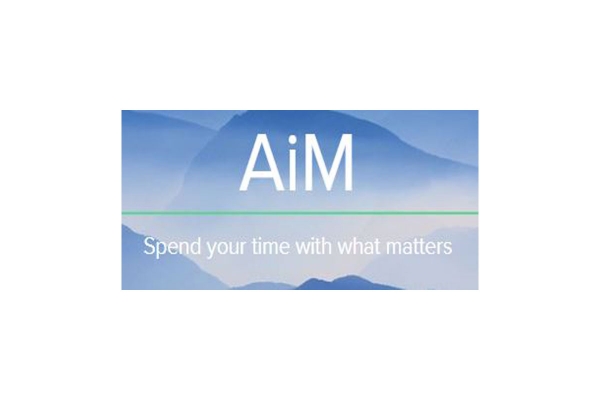
Virtual assistance for planning climate-friendly trips
The main goal of AiM is to reduce business trips by providing companies with a superefficient virtual assistant and more relevant information, so they would be aware of how much money, time and CO2 emissions they could save when avoiding or optimizing their meeting-trips. By using AI/machine learning, the virtual assistant becomes more and more accurate over time, knowing exactly what works best for each user, always with the sustainability criteria in mind. Business flights can either be replaced by train trips or online video meeting solutions such as Skype depending, among other factors, on the distance between the meeting participants.
Austria
≈10

Climathon Project AiM
Virtual assistance for planning climate-friendly trips
The main goal of AiM is to reduce business trips by providing companies with a superefficient virtual assistant and more relevant information, so they would be aware of how much money, time and CO2 emissions they could save when avoiding or optimizing their meeting-trips. By using AI/machine learning, the virtual assistant becomes more and more accurate over time, knowing exactly what works best for each user, always with the sustainability criteria in mind. Business flights can either be replaced by train trips or online video meeting solutions such as Skype depending, among other factors, on the distance between the meeting participants.
≈10Mt CO2e/year

Portable biomass densification technology
Takachar developed technology at the Massachusetts Institute of Technology (MIT) and licensed it in order to develop small-scale, low-cost, portable biomass treatment systems that can be attached to the back of tractors, trailers, or even donkey carts. The innovation can be deployed on farms in remote areas to take small pockets of biomass residues and process them onsite into a chemically densified form that is moisture-resistant and volumetrically dense. This can reduce the logistical, collection, and disposal cost by about 75% compared to current alternatives such as baling and pelleting. The innovation therefore provides farmers with a cost-effective way to clear their land of crop residues after harvest.
India

Takachar
Portable biomass densification technology
Takachar developed technology at the Massachusetts Institute of Technology (MIT) and licensed it in order to develop small-scale, low-cost, portable biomass treatment systems that can be attached to the back of tractors, trailers, or even donkey carts. The innovation can be deployed on farms in remote areas to take small pockets of biomass residues and process them onsite into a chemically densified form that is moisture-resistant and volumetrically dense. This can reduce the logistical, collection, and disposal cost by about 75% compared to current alternatives such as baling and pelleting. The innovation therefore provides farmers with a cost-effective way to clear their land of crop residues after harvest.
Currently unavailable

IoT-enabled solutions for local solar energy
Solnet Group is a smart solar solutions provider that offers utility-scale smart solar and energy storage solutions. Solnet helps businesses save energy costs and reduce their carbon footprint by generating clean renewable energy locally, providing power below grid parity. The company takes full responsibility for planning, installing, and operating solar plants. All maintenance, repairs, updates and cloud-based data services are part of the service. The solution features detailed information from utilities so users can buy energy from the grid when demand is at its lowest.
Finland
≈10

Solnet Green Energy Oy
IoT-enabled solutions for local solar energy
Solnet Group is a smart solar solutions provider that offers utility-scale smart solar and energy storage solutions. Solnet helps businesses save energy costs and reduce their carbon footprint by generating clean renewable energy locally, providing power below grid parity. The company takes full responsibility for planning, installing, and operating solar plants. All maintenance, repairs, updates and cloud-based data services are part of the service. The solution features detailed information from utilities so users can buy energy from the grid when demand is at its lowest.
≈10Mt CO2e/year
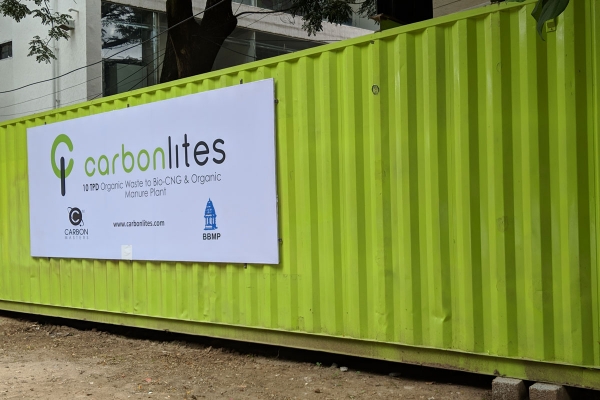
Carbonlites – innovative biogas production
Globally, approximately 11.2 billion tons of waste is generated every year and is amongst the biggest threats affecting our ecosystem. Solid waste dumped at landfill sites produce large amounts of methane, which accounts for 12% of total global methane emissions. Carbon Masters has developed a method for managing the organic waste by collecting and converting the waste into useful fuel. Waste is collected and then treated anaerobically to produce methane gas and organic slurry. The gas is purified, compressed and used as a substitute to LPG for cooking and as fuel in vehicles, while the slurry is treated to produce organic manure used as a replacement to chemical fertilizers.
India
≈10

Carbon Masters India Pvt. Ltd.
Carbonlites – innovative biogas production
Globally, approximately 11.2 billion tons of waste is generated every year and is amongst the biggest threats affecting our ecosystem. Solid waste dumped at landfill sites produce large amounts of methane, which accounts for 12% of total global methane emissions. Carbon Masters has developed a method for managing the organic waste by collecting and converting the waste into useful fuel. Waste is collected and then treated anaerobically to produce methane gas and organic slurry. The gas is purified, compressed and used as a substitute to LPG for cooking and as fuel in vehicles, while the slurry is treated to produce organic manure used as a replacement to chemical fertilizers.
≈10Mt CO2e/year
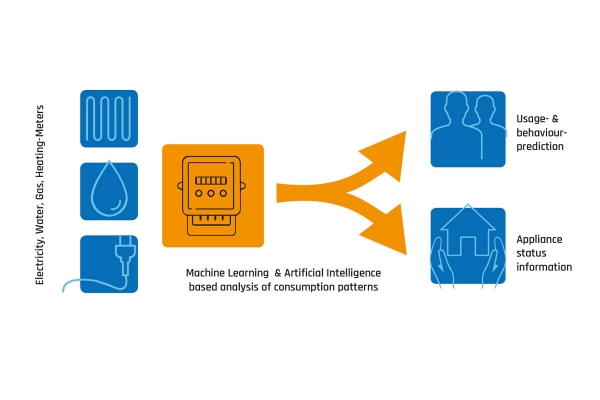
Disaggregation and predictor services
Twingz detects potential fire and/or water damage before it occurs. It does this by providing a fully transparent picture of your energy consumption through monitoring individual appliances all based on the end-user’s electricity and water meters. Using data disaggregation and machine learning, the innovation can prediction and detect discrepancies in usage patterns and therefore give warnings about possible malfunction and potential damage. At the same time, usage data is continuously available to end-users.
Germany
≈10

Twingz
Disaggregation and predictor services
Twingz detects potential fire and/or water damage before it occurs. It does this by providing a fully transparent picture of your energy consumption through monitoring individual appliances all based on the end-user’s electricity and water meters. Using data disaggregation and machine learning, the innovation can prediction and detect discrepancies in usage patterns and therefore give warnings about possible malfunction and potential damage. At the same time, usage data is continuously available to end-users.
≈10Mt CO2e/year